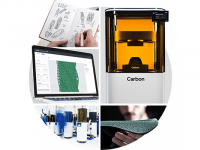Fast Borehole Acoustic Simulations
This webinar will cover an introduction to OnScale for borehole acoustic simulation, as well as Live demo of running open hole sonic simulations in parallel on the cloud.

March 23, 2020
Borehole acoustic imaging technology based on sonic and ultrasonic well logging plays an important role in improving the characterization and integrity of reservoirs by showing graphic details about structural features, texture, porosity, characterization of cement bond, and pipeline integrity in the oil and gas industry.
These measurements – which rely on different inversion methods, based on physics-based models and signal-processing algorithms – are somewhat limited by large-diameter wellbores, tool eccentricity, signal attenuation in heavy muds, presence of fluid channels, and heterogeneous formations. Improvements in transducer design and processing technology have made it possible to address several of these factors for practical operations of this technology.
However, the main challenge has been the development of high-fidelity physics-based models – which are computationally intensive, both in time and memory (RAM) – to generate the necessary synthetic data sets in real time for these measurements to account for any deviations from an idealized borehole condition. This limits their integration into workflows that will help make informed decisions in real time based on these measurements.
At OnScale we have developed fast time-domain multiphysics 3D finite-element (FE) solvers and seamlessly integrated them with cloud high performance computing (HPC) capabilities to address these constraints. OnScale can execute massively parallel simulations with an almost linear scalability, allowing users to consider problems far in excess of anything previously attainable from legacy FEA packages.
This webinar will cover:
- Introduction to OnScale for borehole acoustic simulation
- Live demo of running open hole sonic simulations in parallel on the cloud
- Open and cased hole sonic logging examples
- Ultrasonic logging example for well integrity
Latest News






